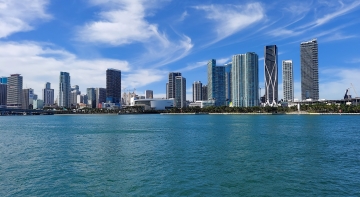731224_Getting Worse_360 px width.jpg

Coastal towns and cities are at risk of rising sea levels. Credit: P. Hughes, CC BY-SA 4.0
Life along the American coastline has been getting more perilous. Earth’s warming climate is causing a rise in sea level, an increase in major hurricanes, more marine heatwaves, and many other problems. That costs time, money, and lives. And things are expected to get even worse in the decades ahead.
A new national climate assessment, issued in late 2023, forecasted that sea level will rise an average of almost a foot from 2020 to 2050. That equals the total rise over the past century. As a result, the report says that coastal flooding at high tide should happen 5 to 10 times more often. Erosion will wash away beaches and bring cliffs tumbling down. And some hurricanes will become far more destructive.
The assessment says the combination of the changing climate and human adaptations, such as more seawalls and levees, will make it more difficult for coastal ecosystems to adapt. Such ecosystems function as buffers against tropical storms, help control erosion, and provide habitat for fish and other organisms.
The report says that some actions now may help minimize the impacts of climate change and human adaptations in the future. Restoring coastal habitat is one of the most important. Cities and towns can also beef up their infrastructure—moving roadways and improving stormwater systems, for example. And they can start planning to relocate people and buildings to less-hazardous areas—to meet the growing threat of climate change.

